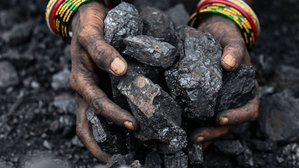
New Delhi, Dec 10 : Coal is the most abundant fossil fuel in India, accounting for 55 per cent of the country’s energy needs as the demand for electricity surges in the fast-growing economy.
Considering the limited reserve potential of petroleum and natural gas, eco-conservation restrictions on hydel projects and geo-political perception of nuclear power, coal will continue to occupy the centrestage in India ‘s energy scenario, a senior coal ministry official said.
India’s coal production during November 2023 rose to 84.53 million tonnes (MT) which was 11% higher than the 76.14 MT produced in the same month last year.
The cumulative coal production from April to November this year has seen a quantum jump to 591.28 MT as compared to 524.53 MT during the same period in the financial year 2022-23 with a growth of 12.73%, the latest figures released by the Coal Ministry showed.
“The notable surge in both coal production and dispatch underscores the nation’s advancing energy self-sufficiency and reinforces our determination to meet forthcoming energy demands.
“The Ministry of Coal remains resolute in its commitment to ensuring continuous coal production and distribution, thereby securing a dependable energy supply that bolsters the nation’s ongoing development,” according to a Coal Ministry statement.
Union Minister for Power and New & Renewable Energy R.K. Singh is of the view that the discussion on coal is a dangerous diversion adopted by some developed countries to shift focus away from their emissions.
Singh has said that the dialogue at COP28 should be about cutting down emissions, and that it is for the developed countries to cut down emissions first. He is of the opinion that the focus should be on reducing carbon emissions, and not on the choice of fuel.
“Developed countries are emitting at a faster pace than other countries and 80% of total legacy carbon dioxide load is contributed by developed countries, whose population is one third of global population. On the other hand, India’s contribution to the carbon dioxide load is only 3%, though our population is 17% of world population.
“Our per capita emissions are 2.19 tons per year or one third of global average, while the global per capita average is 6.8 tons per year. So, it is for developed countries whose per capita emissions are 2-3 times the global average, to cut down emissions first. That is what the discussion on COP should be about. This is the voice of the global south,” the minister said at a media event in Delhi on November 30.
The Power Minister stated that there cannot be any pressure on India to cut down emissions, since the country’s rate of energy transition is the fastest in the world. India has achieved its commitments made at COP, well in advance, and is the only country to achieve the feat.
“We achieved our commitment for reduction of emissions intensity in 2019, eleven years in advance, and we shall achieve the updated target set for 2030 as well. We had pledged that we will have 40% of our capacity from non-fossil fuels by 2030, while we reached that target in 2021 itself. Further, we have launched programmes such as Perform Achieve Trade, in which we set targets for large industries to make energy efficiency improvements,” Singh explained.






